Quick Reference
1944
Unknown
Chalk Drawing
Landscape
Landscapes & Views
22 x 29
Home of Mr. & Mrs. Roger Smith, '44
Unknown
NA
Related Links
- See also the...
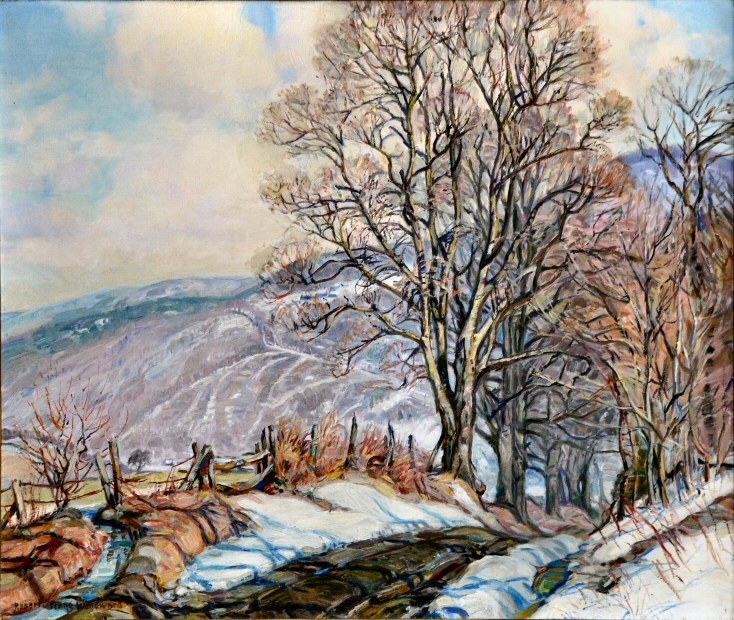 Roads & Streets Gallery to view related pieces.
Roads & Streets Gallery to view related pieces.
- See also the...
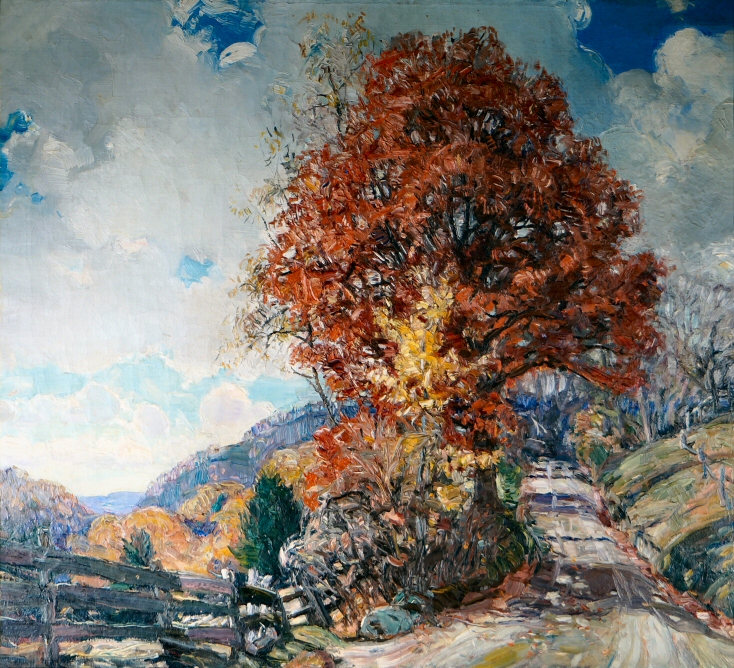 Burning Autumn Gallery to view related pieces.
Burning Autumn Gallery to view related pieces.
- See also the...
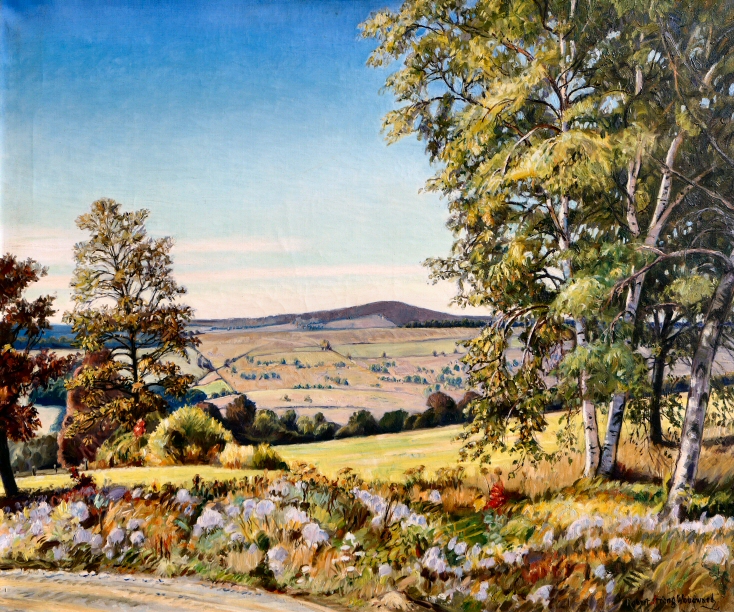 Landscapes & Views Gallery to view related pieces.
Landscapes & Views Gallery to view related pieces.
- See also the...
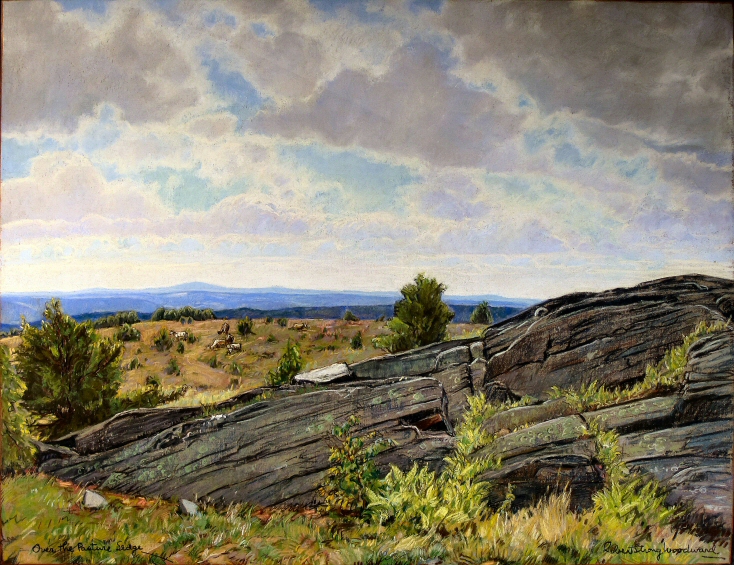 Rocks & Stone Walls Gallery to view related pieces.
Rocks & Stone Walls Gallery to view related pieces.
- See our page devoted to ...
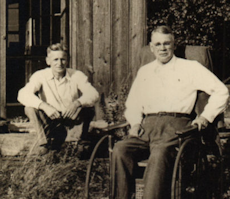 RSW friend, educator, and amateur photographer F. Earl Williams
RSW friend, educator, and amateur photographer F. Earl Williams
- See also the Scrapbook page of photos taken by Mr. F. Earl Williams
- See also the...
180.png) Award Winners Gallery to view related pieces.
Award Winners Gallery to view related pieces.
- See also the Exhibition List for other Exhibits.
- See also the Scrapbook page devoted to Mr. F. Earl Williams
- See also the Scrapbook page of photos taken by Mr. F. Earl Williams
Featured Artwork: Mountain Meadow (The fourth painting of a series of 4)
RSW's Diary Comments
 Of the four various composite paintings of this scene. This is the
only painting that does not have a diary entry.
Of the four various composite paintings of this scene. This is the
only painting that does not have a diary entry.
Editor's note:
 Just one month ago (03-29-2024) we
made all kinds of changes to three of the paintings related to the painting of this page. We proved through sepia
prints and painting diary evidence that the painting long thought to be Through October Hills was really,
New England in October. That conclusion was premature because we completely forgot about a chalk
drawing named Mountain Meadow which was photographed hanging in the home of Mr. & Mrs. Roger Smith in
Gardner (MA) in December of 1944. The photograph was taken by Woodward's close friend F. Earl Williams, the
Gardner High School principal, and it is assumed Williams helped arrange the small exhibition.
Just one month ago (03-29-2024) we
made all kinds of changes to three of the paintings related to the painting of this page. We proved through sepia
prints and painting diary evidence that the painting long thought to be Through October Hills was really,
New England in October. That conclusion was premature because we completely forgot about a chalk
drawing named Mountain Meadow which was photographed hanging in the home of Mr. & Mrs. Roger Smith in
Gardner (MA) in December of 1944. The photograph was taken by Woodward's close friend F. Earl Williams, the
Gardner High School principal, and it is assumed Williams helped arrange the small exhibition.

 Side by side comparisons of the frames from the
Side by side comparisons of the frames from the
photo of it hanging at the Smith home in 1944 and the
painting we BELIEVED to be New England in October
and discover they bare a very close resemblance.
In our exhibition records, Mountain Meadow is listed as a chalk drawing, along with The Road Home, another composite painting subject from the same time period. We began to question whether these two supposed pastels were in fact correctly labeled. The frames do not typically look like frames you find chalk drawing to be enclosed. They are too large and there does not appear to have any gaps for matting etc. We actually take a picture we took long ago of the painting we are now calling New England in October and begin to compare their frames and remarkably, they appear to be quite similar.
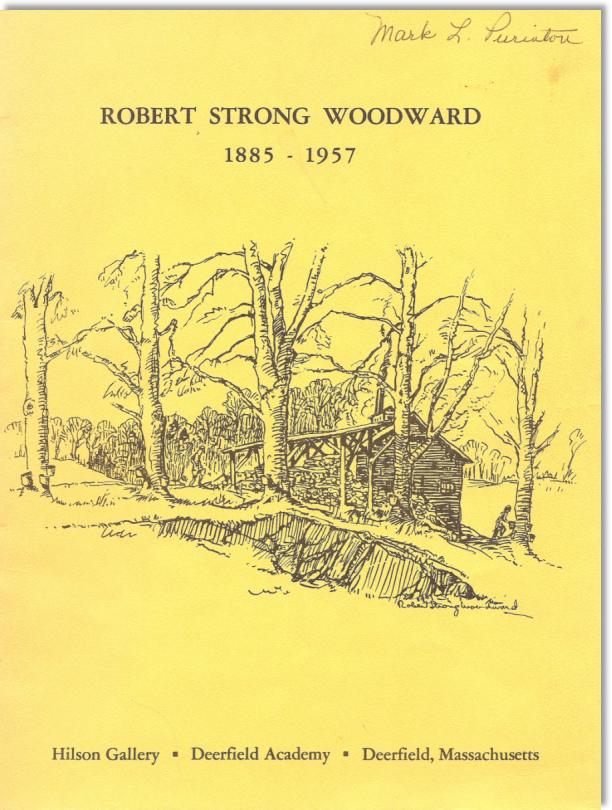
 The cover of the American Studies
The cover of the American Studies
Group catalogue. To see the entire
catalogue
CLICK HERE
We dig a little deeper and going to the original Wood-ward
catalog produced by 1970 Deerfield Academy's American Studies Group (ASG). Williams had given the ASG a lot of
help as a first-person contact of the artist. We assume that the information on the Smith event was given by Williams
himself. We confirm, that both supposed chalks exhibited at the Smith House but found nothing about the medium of
either artwork. However, both pieces where listed next to other chalk drawings and we now believe that
Dr. Mark mistakenly labeled them as chalks. To confirm that we went to his original PowerPoint documents of the
early days of the website and sure enough both composite paintings where labeled as chalk drawings right from the
start of the website- 2002. Let us remind you that Doc was 76 when he started the website and over all did a remarkable
job. Even to this day, we continue to prove how difficult it is to put into context the wealth of information we have
to work with and how confusing it can get.
⮞ The next portion are the other paintings related to this pages...
⮞ Go to the bottom of this page for more on the Smith home exhibit...
---------------------------------------------------------------------------------------------------------------------------------
Comments from the original painting, In October Hills:
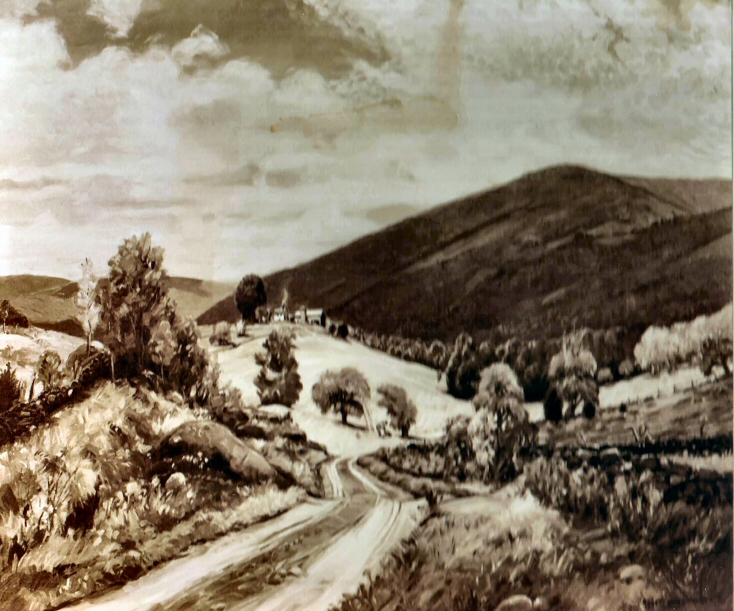
 In October Hills, 1942, 1st painting, 25" x 30"
In October Hills, 1942, 1st painting, 25" x 30"
The original version above varies with the second and third
versions. We believe it is because the Vose client gave RSW
specific instructions as to what she wanted, including its
size, perspective, vantage point, as well as, the tree grouping.
"Painted in 1944. A brilliant autumn "composite" composed in the studio for a Vose client, which was never bought by said client; road and walls in foreground taken from Aaron Baggs Wind"ll Blow Hill, mountain, farm and view beyond (with orchard), taken from Just After Haying Time. From this same theme, but with a heavy group of trees to the left. I made another canvas (22 x 38) (also refused by the Vose client, but soon bought by Mr. and Mrs. Billings of Hatfield called Through October Hills which see) Sold in late November 1947, through Mr. Earl Perry to Newton Savings Bank, Newton 58, Mass., where with 2 other paintings it had been hanging since May, 1947."
Editor's note:
Woodward is incorrect on the year of every diary comment in this series. This painting hung in January of 1943 at the Vose gallery making the year it was made 1942.
Comments from the second painting, Through October Hills:
734.jpg?url=photos/through_october_hills(24)734.jpg)
 Through October Hills, '43, 2nd painting, 22" x 38"
Through October Hills, '43, 2nd painting, 22" x 38"
The second painting above is subtly different from the third
painting because it was made specific to the request of a
potential buyer at Vose who passed on the first painting also
did not she the second painting made to her specifications.
"Painted 1944-45. A brilliant autumn canvas, composed in the studio from elements of different previous canvases of mine, a purplish Oct. mountain with shafts of sunlight on it. The background (taken from Just After Haying Time) --a stonewalled roadway running out of the foreground to drop into middle distance (taken from Wind'll Blow Hill canvas) with mass of autumn trees at the left. Made for tentative clients of Vose Galleries but not bought by them when offered for inspection. Soon purchased, however, from the studio by Mr. and Mrs. Raymond Billings of Hatfield, Mass. At the time made several variations in size composition etc. of the same general theme."
Comments from the third painting, New England in October:
734.png?url=photos/mountain_meadow(24)734.png)
 New England in October, '44, the 3rd painting 22" x 36"
New England in October, '44, the 3rd painting 22" x 36"
The image above is actually Mountain Meadow. We do not
have an image of this painting, unless there is a sepia print
being mistaken for something else. We will explore this next.
"Painted about 1944 - 5. Several paintings similar to this I made in the studio the winter of 1944 - 5. The description under Through October Hills (which see) applies to this picture too, although the composition is somewhat different with the stone wall in Through October Hills, for instance, much more prominent. Sold Dec. '53 to Mr. and Mrs. Robert Abbott of Braintree, Mass."
Editor's note:
As we have pointed out, the image we thought was Through October Hills and proved not to be, was mistakenly attributed to this painting name and has now been proven to also be incorrect. Still, it is the same size as the painting above. We also know it is different than Through October Hills and thus not painted in the same perspective. We believe that the artist painted this third piece the way he wanted it and not corrupted by the demands of a fussy client. He liked it so much he made another for the Smith Exhibit.
Additional Notes
The 1944 Mr. & Mrs. Roger Smith Exhibition:

 The chalk drawing
The Road Home, the oil A Winter
The chalk drawing
The Road Home, the oil A Winter
Afternoon and this
chalk Mountain Meadow together
hanging on the wall of the Smith home on the wall
 To the right: is a photograph of the oil
The Road Home, the oil A Winter Afternoon and the oil
Mountain Meadow together hanging on the wall for a private
exhibition in the home of Mr. & Mrs. Roger Smith of Gardner, MA, December, 1944. The picture was taken by Woodward
friend, educator and amateur photographer F. Earl Williams. Williams was
once the principal of Gardner High School and so we believe he had something to do with arranging this rare exhibition
of Woodward's paintings in a private residence. In all, 14 paintings and were displayed. Williams only photographed 11
of them that we know. The three missing photographs are New England Impressions*,
Winter Farms, and From the North Window*.
The paintings photographed are as follows in pairs: Portrait of a Shadow
and From a Mountain Farm*, April Sun
and Frost on the Window, A Winter Song*
and The Big Chimney*, The Road Home, the
oil A Winter Afternoon and Mountain Meadow together and then
Tranquility, and The Little Red Barn*
as singles.
To the right: is a photograph of the oil
The Road Home, the oil A Winter Afternoon and the oil
Mountain Meadow together hanging on the wall for a private
exhibition in the home of Mr. & Mrs. Roger Smith of Gardner, MA, December, 1944. The picture was taken by Woodward
friend, educator and amateur photographer F. Earl Williams. Williams was
once the principal of Gardner High School and so we believe he had something to do with arranging this rare exhibition
of Woodward's paintings in a private residence. In all, 14 paintings and were displayed. Williams only photographed 11
of them that we know. The three missing photographs are New England Impressions*,
Winter Farms, and From the North Window*.
The paintings photographed are as follows in pairs: Portrait of a Shadow
and From a Mountain Farm*, April Sun
and Frost on the Window, A Winter Song*
and The Big Chimney*, The Road Home, the
oil A Winter Afternoon and Mountain Meadow together and then
Tranquility, and The Little Red Barn*
as singles.
...And what an exhibition! Worthy of anything held in New York or Boston Gallery, it featured a number of Woodward's most
exhibited editorial paintings going back as far as 1935. [noted by asterisk*] Two of the paintings hanging at the exhibit,
A Winter Song and New England Impression previously hung at the 1939 Golden Gate Exposition in San
Francisco and the 1939 New York World's Fair respectively.



734.png)